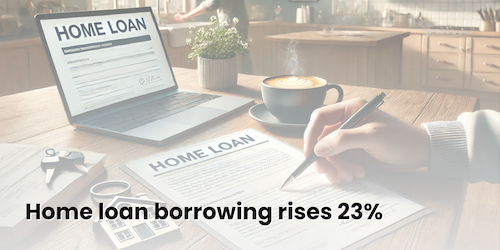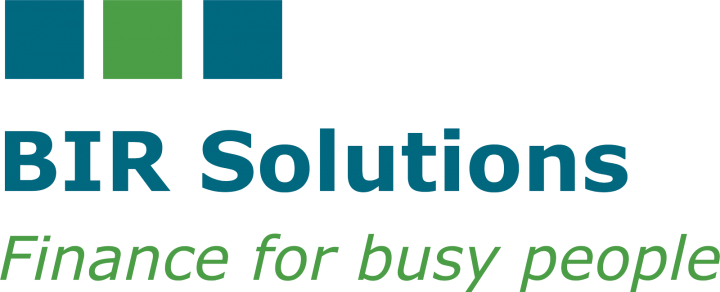Here is another mega bumper monthly newsletter!
There is just so much good stuff out there which we would like to share with you. Plus a free video of me freezing in Melbourne’s October weather (with a badly worn puffer jacket🤣)
But first, two quick shameless thoughts:
#1 If you know someone who would like to receive this newsletter, just let me know and with their permission, I will happily put them on my database.
They can of course first check out our past newsletter content here:
#2 If you like what we write about and you would like to help us grow our business, we would love a five star Google review. Small businesses like BIR Finance thrive when they get a lovely 5-star review so anything you can do to help us would be fantastic! 🥰🥰🥰
Now back to the blog!
November is an interesting month, not least because it is the birth month of my eldest child (Happy Birthday Hannah!) It is also the last hiatus before the frenzy of Christmas shopping and summer holidays.
Plus, it marks the end of the school career for those in Year 12 who will now start to navigate adult life with all this entails. I sometimes feel it’s like when you learned to walk at age two except this time round, the adults expect you to make the transition smoothly and without fuss – and not much clapping when you get it right! 😍.
Below you will find the following articles:
- Best rates – October 2024
- Offset accounts and Fixed Rate loans
- Business statistics to shock you
- Credit repair – the ins and outs
- Expats, Visa holders and Non-Residents are covered
- Four advantages of using your SMSF for property investments
- Updates for Landlords and Tenants in Victoria
- Do interest rate increases cause rent increases?
- How big is the average loan?
- Mortgage borrowing rises 23%
- Why inflation expectations matter
- Aussies set personal loan record
Get out your reading spectacles and read more below.

Rates below as of: 29 October 2024
Some small movements only since last month – not much to get excited about this month!
Owner Occupiers
Principal and Interest
• Fixed Rates: from 5.24% pa – 2 year term
• Variable Rates: from 5.78% pa (excluding ‘clean energy’ loans)
Interest Only
• Fixed Rates: from 5.94% pa – 2 and 3 year terms
• Variable Rates: from 6.14% pa
Investors
Principal & Interest
• Fixed Rates: from 5.64% pa – 2 and 3 year terms
• Variable Rates: from 6.18% pa
Interest Only
• Fixed Rates: from 5.79% pa – 2 and 3 year terms
• Variable Rates: from 6.34% pa
Offset accounts and Fixed Rate loans
Anyone who knows me will also know that I am a big fan of Offset accounts.
It is pretty simple: if you use your Offset account as your transaction account, you will always have the maximum reduction on your loan balance each day there are funds in your Offset account.
This makes factors like your repayment period a non-issue as you always have the maximum reduction in your loan account balance via the funds in your Offset account.
What has not been common with lenders is a 100% Offset accounts with Fixed Rate loans for unlimited amounts – and with up t 10 splits!
if this is of interest to you,, let me know and we can organise a quick chat.
Business statistics to shock you
My background in insolvency and restructuring comes back to me when I read an email from Jeanine Purdie, Repaid Collections, with the following gems:
- Between September 2023 and September 2024, 9,500 businesses closed—a 50% increase (Equifax).
- Among companies in external administration, 57% had no previous recorded adverse events (Equifax).
- Payment defaults have risen 83% year-on-year, while court actions are at an all-time high (Creditor Watch).
- Defaults in the food and beverage sector now exceed those in construction, with rates especially high in Victoria (Creditor Watch).
- The ATO is currently owed $51.4 billion, with 31,995 businesses carrying tax defaults over $100,000 and past 90 days. These businesses have been listed on credit bureaus, and 25% of tax debt is more than two years old (ATO).
- Nearly half (46%) of small businesses are unprofitable, and one-third lack cash reserves (Small Business Ombudsman).
- Cybercrime is a growing concern; business owners should be vigilant against identity theft, fake invoice schemes, account breaches, and ransomware (Victoria Police).
Credit repair – the ins and outs
Our Free Credit Report and Credit Report Audit
When we start working on a new loan application with a client, one of the first things we do is provide our clients with a free Credit Report and free Credit Report Audit.
Reviewing a client’s credit file upfront can assist with lender selection as well as ensuring that any mistakes or errors are corrected and fixed before the loan application is lodged.
Are Credit Repairers legit?
I have heard the question, ‘Is credit repair legit?’ Well, from my experience, it is legit, and it does work, but you need to make sure you work with a reputable credit repairer.
If you would like to access a credit repairer, we have worked with a couple and would be happy to pass on their details. One I’ve worked with charges a fixed fee that covers all defaults, which can be a good option if money is tight.
Do all lenders use Credit Scores?
Not all lenders use Credit Scores, but most lenders in the residential space – particularly the full doc lenders (i.,e. you are required to supply all the documents the lender requests), will use the data from a Credit Report to check on the applicant’s history of defaults, late payments etc.
Credit repairers are more likely to operate in the space where the applicant’s Credit Score is less than 500 to 600 as scores less than this tend to have some aspect of their Credit File which raises a concern for a lender.
We have had clients with a Credit Score of over 1,000 (amazing!) and down to a client with ‘no-score’! That’s as bad as it gets! But now, our no-score client has a credit score of over 600 👏👏👏
What you can repair?
- Issues to do with Identity Theft
- Errors – incorrect or outdated records
- Duplicate entries
- Negative factors such as late payments; particularly if there are valid reasons.
- Default removals where the debt showing as being in default has been paid. For example, one credit repairer told the client’s supplier, “We can arrange to get you paid as long as you agree to remove the default from the client’s file.”
What you can’t repair?
- Legitimate debts
- Bankruptcies
- Serious credit infringements (includes Court Judgements and repeated bad credit behaviour where the lender suffers financial loss).
Need to know a good credit repairer?
I’ve worked with or have had extensive discussions with Fix Bad Credit, Clear Credit Solutions and Credit Fix Solutions. They all know their stuff and are worth a chat.
Or, just give me a call!
Expats, Visa holders and Non-Residents are covered
There are lenders who will lend to expats, visa holders and non-residents.
Key issues include
- Country of employment and currency of payment.
- Employees, contractors and the self-employed.
- LVRs – which can go as high as 90%
- Obtaining a Credit Report from your country of occupation.
- Income is often ‘shaded’ when assessing serviceability (often shaded down to 70% or 80% of actual income).
Four advantages of using your SMSF for property investments
Mark Zammit, Zammit Real Estate, has prepared a 4-point summary of four benefits of using your SMSF for property investment purposes. This was written in the context of NDIS property investments but it applies to all property investments in your SMSF.
Of course, check with your Financial Planner or Advisor before proceeding!
#1 Tax Advantaged Cashflow
Rental income from the property is taxed at a maximum rate of 15% within the SMSF, which is significantly lower than the higher marginal tax rates you may encounter personally. Furthermore, all ongoing property expenses are fully tax-deductible through your SMSF, leading to a considerable cash flow advantage for your retirement savings..
#2 Investment Control and Growth
SMSFs offer enhanced control over your investment strategy, allowing you to select properties that align with your goals and risk tolerance. You can invest in prime locations known for strong capital growth, enabling you to diversify your SMSF portfolio beyond traditional stocks and shares. This approach can potentially lead to significant long-term value appreciation.
#3 Reduced Capital Gains Tax
Selling a property through your SMSF can result in substantial tax savings. Unlike holding the property personally, an SMSF offers a lower capital gains tax rate of 15%, which can even reduce to zero once you reach retirement. Over time, this can lead to considerable tax savings, potentially amounting to tens or even hundreds of thousands of dollars.
#4 Tax-Free Income in Retirement
When you retire, converting your superannuation into a pension allows your SMSF to receive and distribute rental income entirely tax-free. This strategy can meaningfully increase your retirement income and enhance your financial security over the long term.
Updates for Landlords and Tenants in Victoria
Rental Dispute Resolution Victoria
The Victorian government has confirmed that the Rental Dispute Resolution Victoria (RDRV), an initiative announced in the Housing Statement, will be managed by VCAT. Key points to note:
- Free to access
- Expected to commence mid-2025, legislation to be introduced in November 2024
- Expected to handle simple disputes on matters such as such repairs, maintenance, damage, bond claims or rental increases
- Online, phone and in-person dispute resolution services to be available
Rent bidding prevention
All lease advertisements must include a single rent price. This rent should be set from the initial listing of the property. Failing to list a single rent price may be interpreted as soliciting of rental bidding and can attract high penalties.
Do interest rate increases cause rent increases?
Reported by Philip Robison, who publishes The Holy Grail (www.theholygrail.com.au)
From a 13 year study of investor tax returns, the Reserve Bank of Australia (RBA) has said that rents only increase by 1 cent for every $1 increase in loan repayments. Instead, property investors and landlords bear the brunt of the increasing costs.
The RBA says it is a case of “correlation rather than causation” that rents are rising at the same time as interest rates. Both tend to move in sync with the economic cycle, and while there is some connection between interest rates and rent increases, it remains minimal.
The RBA says other factors are driving rents up, including the level of demand relative to the stock on market. “The RBA’s assessment is that high rent growth in recent years reflects this fundamental force. Housing demand has been strong, supported by high population growth and increased preference for more space, while supply has been hampered by ongoing capacity constraints and increases in construction costs.”

First home buyers purchasing as owner-occupiers are now taking out loans averaging $540,294 to enter the market, according to an analysis by money.com.au of the latest Australian Bureau of Statistics mortgage data.
In comparison, refinancers are borrowing an average of $587,569 as owner-occupiers and $639,433 as investors.
Each of these figures has risen over the past year.
“One of the extraordinary phenomena of the current rate-hiking cycle is that despite higher interest rates, we’ve also seen property values not only recover from a short, sharp decline where the market bottomed out in the beginning of 2023, but values have actually managed to climb back to new record highs,” CoreLogic’s Head of Research, Eliza Owen, said.
“Part of the reason that home values have continued to increase in a high interest rate environment is because of a surge and an acute level of net overseas migration, changes in household formation where there are fewer people living per dwelling and also the constraints that exist in the construction sector.”

Despite a cooling in the property market over recent months, mortgage activity remains robust.
In August, borrowers secured $30.38 billion in home loans, marking a 1.0% increase from the previous month and a 23.0% rise compared to the same time last year, as reported by the Australian Bureau of Statistics.
Owner-occupiers took out $18.67 billion in loans, up 0.7% monthly and 16.8% annually. Meanwhile, investors borrowed $11.71 billion, reflecting a 1.4% monthly increase and a significant 34.2% rise year-on-year.

When considering a home loan, it’s natural to focus on the interest rate. However, several other factors also play an important role:
- Fees: Sometimes, a mortgage with a higher interest rate but lower fees can be more affordable over the loan’s lifetime than one with a lower rate and higher fees. Note: We help you work this out by providing you with our ‘total cost’ approach to loan comparisons (i.e. we include all fees, charges and interest. We typically do this for the first two years of the loan as well as the life of the loan.
- Flexibility: Features like an offset account, redraw facility, and options for extra repayments can make managing your loan easier and reduce overall costs.
- Loan term: While most people choose a 30-year term, opting for a shorter term means higher monthly payments but can significantly reduce total interest paid. However, if you use an Offset account (covered elsewhere in this newsletter), you will note that as long as you put all your surplus funds in the Offset account, you will be minimising the interest you pay over the life of the loan.

The Reserve Bank of Australia (RBA) has raised the cash rate in recent years to curb inflation, and with inflation now easing to more manageable levels, there is potential for a rate cut in the near future. This context added particular interest to a recent speech by RBA Assistant Governor Sarah Hunter, who discussed expectations around inflation.
“Macroeconomists generally think that a prerequisite for consistently achieving low and stable inflation over time is well-anchored inflation expectations,” she said.
This is because when workers expect high inflation, they tend to demand higher wages; similarly, if businesses anticipate rising prices, they are more inclined to offer higher wages to attract talent. Both actions contribute to increased inflation, making inflation expectations a self-fulfilling prophecy.
Ms Hunter said the RBA was “constantly alert for signs” that inflation expectations were no longer well-anchored, but added that the RBA was “not currently concerned that expectations could become de-anchored in the near term”.
Ms. Hunter’s speech provided no indication of when the RBA might begin lowering the cash rate. Consequently, it remains wise to continue budgeting with higher interest rates in mind.

Recent data confirms that more consumers are turning to personal loans than ever before.
In August, borrowers secured a record $2.741 billion in personal loans, representing a 2.0% increase from the previous month and a 15.3% rise compared to the same month last year, according to the Australian Bureau of Statistics.

Many people take out personal loans to purchase cars—in fact, 56.6% of personal loans go toward vehicle purchases.
Personal loans are also used for household goods, holidays, weddings, medical expenses, relocation costs, and more. They offer fast and convenient access to funds, but it’s essential to seek expert advice to ensure the repayments are manageable and the loan is cost-effective.
If you’re considering a personal loan, reach out to me. I can explain your options, compare the market, and assist with your application.


